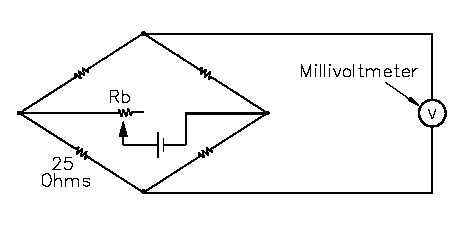Temperature Detection Circuit Overview
Electronics, Instrumentation & Electrical Database
Temperature Detection Circuit Overview
Figure 1 is a block diagram of a typical temperature detection circuit. This represents a balanced bridge temperature detection circuit that has been modified to eliminate the galvanometer.

Figure 1
The block consists of a temperature detector (RTD) that measures the temperature. The detector is felt as resistance to the bridge network. The bridge network converts this resistance to a DC voltage signal. An electronic instrument has been developed in which the DC voltage of the potentiometer, or the bridge, is converted to an AC voltage. The AC voltage is then amplified to a higher (usable) voltage that is used to drive a bi-directional motor. The bi-directional motor positions the slider on the slidewire to balance the circuit resistance.
If the RTD becomes open in either the unbalanced and balanced bridge circuits, the resistance will be infinite, and the meter will indicate a very high temperature. If it becomes shorted, resistance will be zero, and the meter will indicate a very low temperature.
When calibrating the circuit, a precision resistor of known value is substituted for the resistance bulb, as shown in Figure 2.

Figure 2
Battery voltage is then adjusted by varying Rb until the meter indication is correct for the known resistance.